
How to Use 9V battery: Examples, Pinouts, and Specs
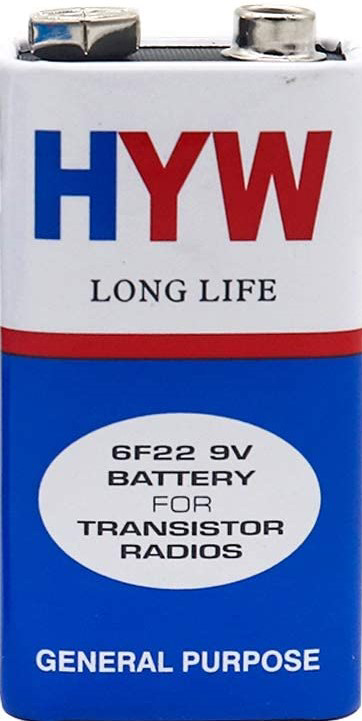
 Design with 9V battery in Cirkit Designer
Design with 9V battery in Cirkit DesignerIntroduction
A 9V battery is a compact power source commonly used in a wide range of electronic devices such as smoke detectors, multimeters, and portable electronic devices. Its rectangular shape and snap connectors make it easily recognizable and user-friendly. The 9V battery is valued for its reliability and consistent voltage output, making it suitable for applications that require a stable power supply.
Explore Projects Built with 9V battery
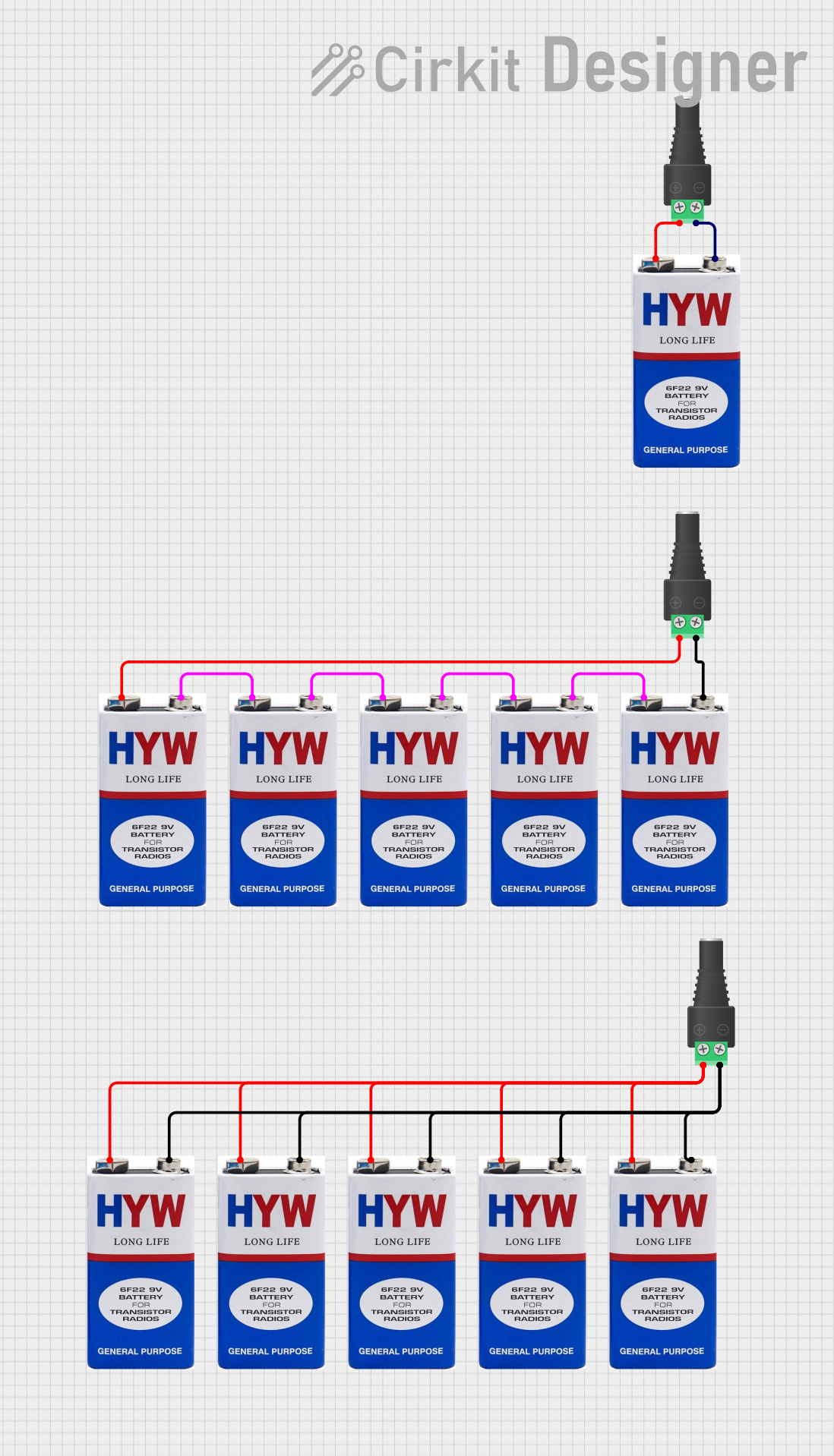
 Open Project in Cirkit Designer
Open Project in Cirkit Designer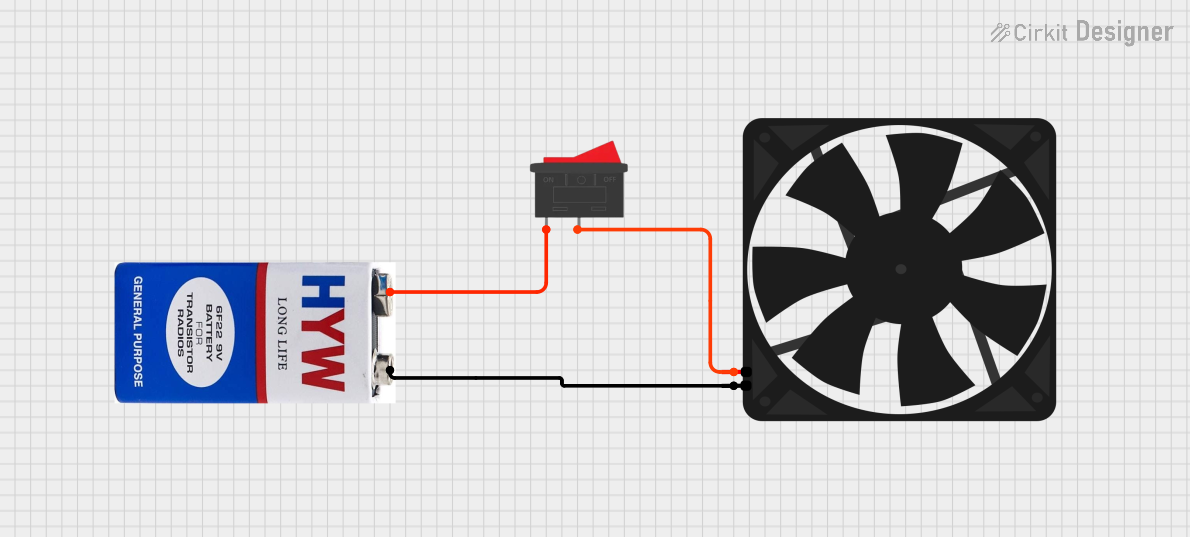
 Open Project in Cirkit Designer
Open Project in Cirkit Designer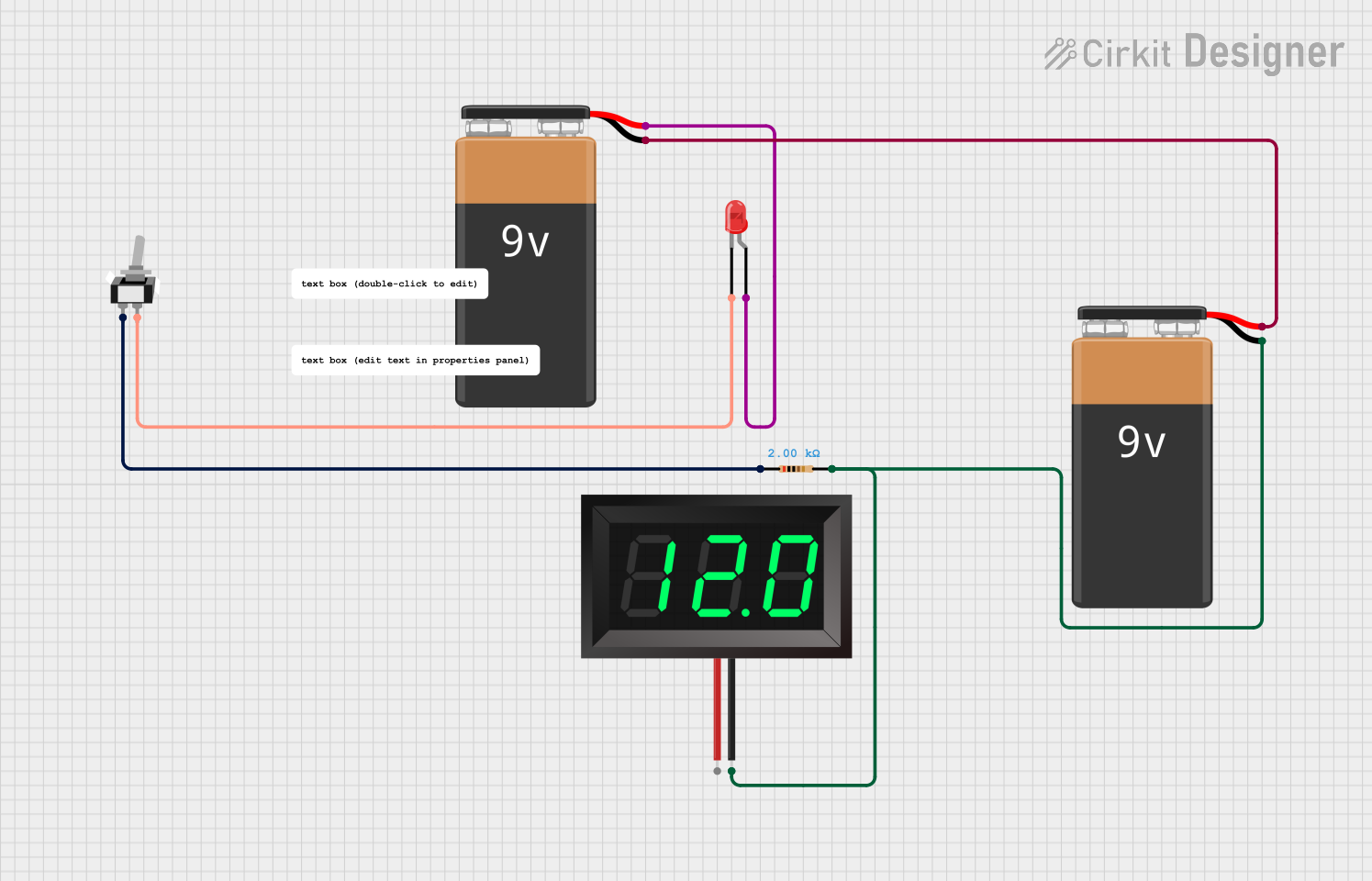
 Open Project in Cirkit Designer
Open Project in Cirkit Designer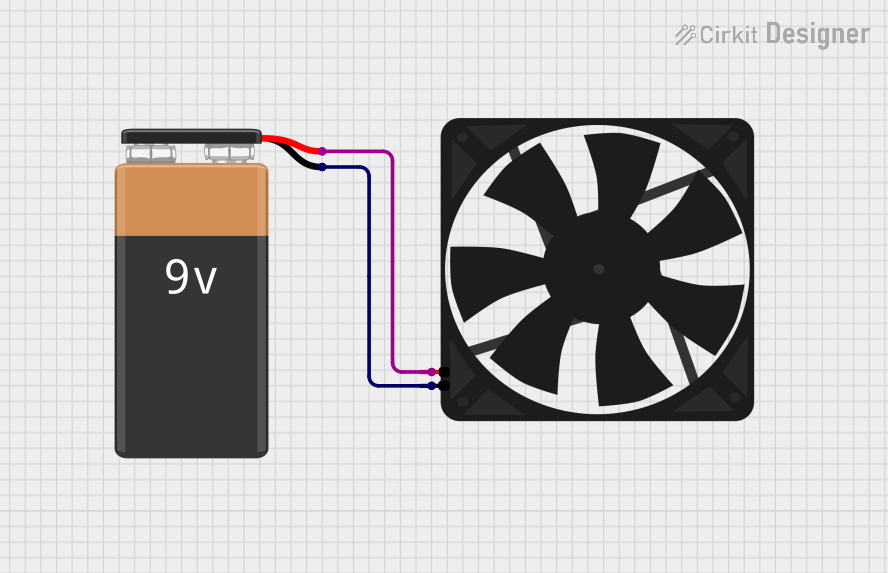
 Open Project in Cirkit Designer
Open Project in Cirkit DesignerExplore Projects Built with 9V battery

 Open Project in Cirkit Designer
Open Project in Cirkit Designer
 Open Project in Cirkit Designer
Open Project in Cirkit Designer
 Open Project in Cirkit Designer
Open Project in Cirkit Designer
 Open Project in Cirkit Designer
Open Project in Cirkit DesignerTechnical Specifications
General Characteristics
- Nominal Voltage: 9V
- Chemistry: Alkaline, NiMH (Nickel-Metal Hydride), or Lithium
- Capacity: Varies by chemistry and manufacturer (Alkaline: ~500mAh, NiMH: ~200-300mAh, Lithium: ~1200mAh)
- Shelf Life: Typically 5 years for Alkaline, 3 years for NiMH, and 10 years for Lithium
- Operating Temperature Range: -20°C to 60°C (may vary by battery chemistry)
Pin Configuration and Descriptions
| Pin | Description |
|---|---|
| + | Positive terminal (smaller, typically marked with a "+" sign) |
| - | Negative terminal (larger, typically marked with a "-" sign) |
Usage Instructions
Installing the Battery
- Identify the positive and negative terminals on the 9V battery.
- Align the battery terminals with the corresponding contacts in the device.
- Press the battery onto the contacts until it snaps into place securely.
Circuit Integration
- Polarity: Ensure the correct polarity when connecting the battery to a circuit. Reversing polarity can damage electronic components.
- Voltage Regulation: If the circuit requires a regulated voltage, use a voltage regulator to maintain a consistent output.
- Current Limiting: Incorporate a current-limiting resistor or fuse to protect against short circuits or overcurrent conditions.
Best Practices
- Store batteries at room temperature in a dry environment.
- Do not attempt to recharge non-rechargeable 9V batteries.
- Check the battery's expiration date and replace it if it's past its shelf life.
- Dispose of used batteries properly according to local regulations.
Troubleshooting and FAQs
Common Issues
- Device not powering on: Check the battery's charge with a multimeter and ensure proper installation.
- Low battery life: Ensure the device's power requirements match the battery's capacity. Replace the battery if necessary.
- Leakage or corrosion: Remove the battery immediately and clean the device's contacts. Use gloves to handle a leaking battery.
FAQs
Q: Can I use a 9V battery with an Arduino UNO? A: Yes, you can power an Arduino UNO with a 9V battery through the VIN pin or the DC power jack.
Q: How do I know when to replace my 9V battery? A: Replace the battery when the device powered by it shows signs of low power, or periodically check the voltage with a multimeter.
Q: Is it safe to connect multiple 9V batteries in series or parallel? A: Connecting in series increases voltage, which may exceed device ratings. Connecting in parallel increases capacity but requires batteries of the same type and age.
Example Arduino UNO Code
// This example demonstrates how to power an Arduino UNO with a 9V battery
// and read the battery voltage through an analog pin.
int batteryPin = A0; // Analog pin connected to voltage divider output
void setup() {
Serial.begin(9600);
}
void loop() {
int sensorValue = analogRead(batteryPin); // Read the analog value
float voltage = sensorValue * (9.0 / 1023.0); // Convert to battery voltage
Serial.println(voltage); // Print the voltage to the Serial Monitor
delay(1000); // Wait for 1 second before reading again
}
Note: The above code assumes a voltage divider is used to step down the 9V battery voltage to a safe level for the Arduino analog pin (which has a maximum of 5V). Always ensure that the input voltage to any Arduino pin does not exceed its maximum rating.